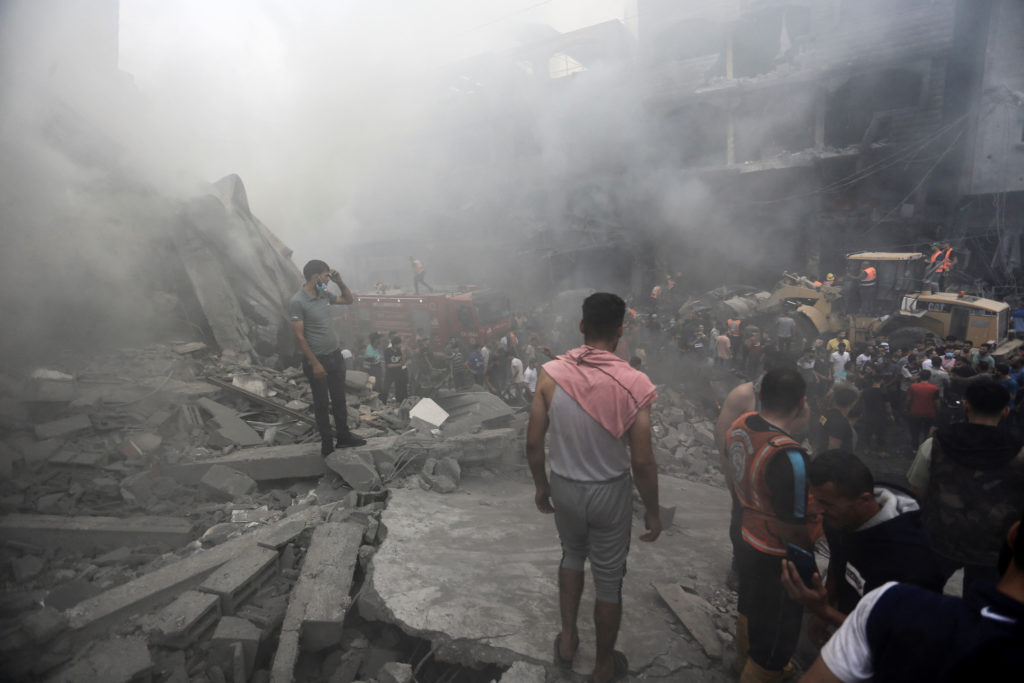PORTLAND, Ore. (AP) — A gas mask dangled from Deidra Watts’s backpack as she joined dozens of others outside the U.S. Immigration and Customs Enforcement building in Portland, just as she has many nights since July.
The protesters toed a blue line painted across the building’s driveway. “GOVERNMENT PROPERTY DO NOT BLOCK,” read its white, stenciled letters. When they lingered too close, what appeared to be pepper balls rained down on them from officers posted on the building’s roof.
No one was injured Wednesday, and some of the crowd began to dissipate by about midnight.
While disruptive to nearby residents — a charter school relocated this summer to get away from the crowd-control devices — the nightly demonstrations are a far cry from the unrest that gripped the city following the murder of George Floyd by Minneapolis police in 2020.
Nevertheless, the protests have drawn the attention of President Donald Trump, who described living in Portland as “like living in hell” and mentioned the possibility of sending in federal troops to combat crime, reflecting his sentiments regarding urban tension in various U.S. cities.
Interestingly, most violent crime around the country has actually declined in recent years, including in Portland, where a report has shown a significant decrease in homicides.
“There’s a propaganda campaign to make it look like Portland is a hellscape,” said Casey Leger, who often observes ICE detainee transfers. He advocates for better representation of the area's civility.
The protests peaked in June, coinciding with nationwide movements, prompting increased law enforcement responses. Some protests have resulted in federal charges against demonstrators.
As protests continue, Portland Mayor Keith Wilson emphasizes the city’s commitment to free expression while maintaining public safety amidst unrest that has seen various clashes and significant community disruption.






















